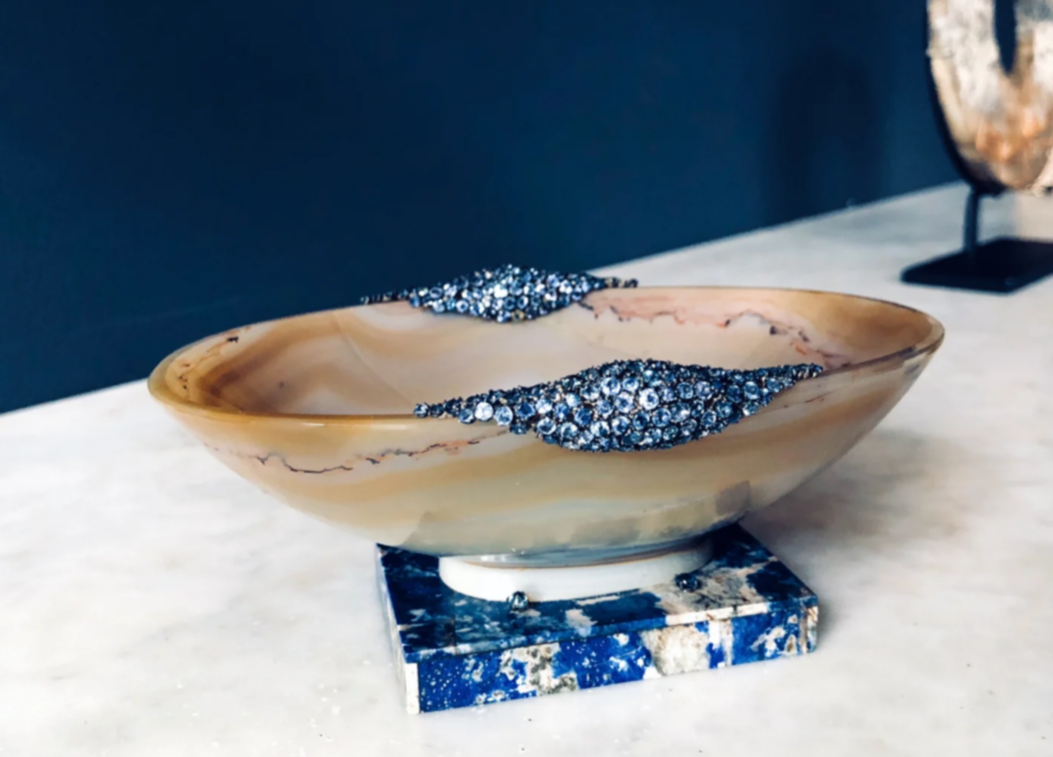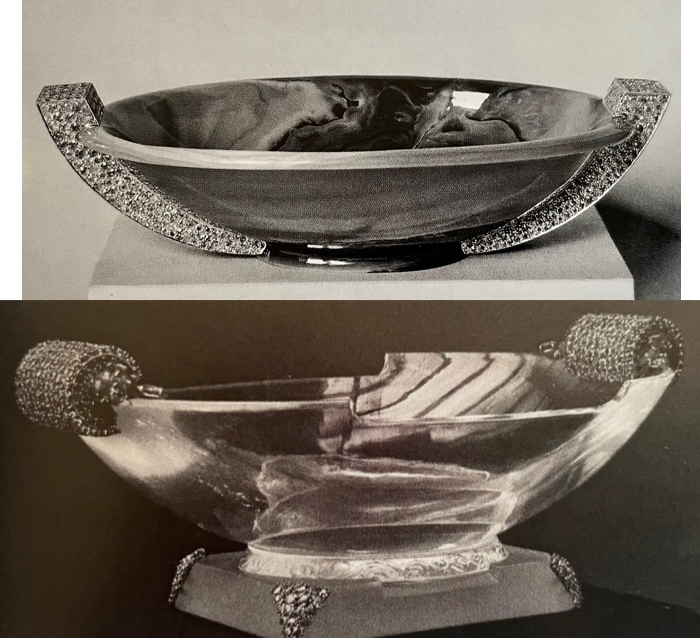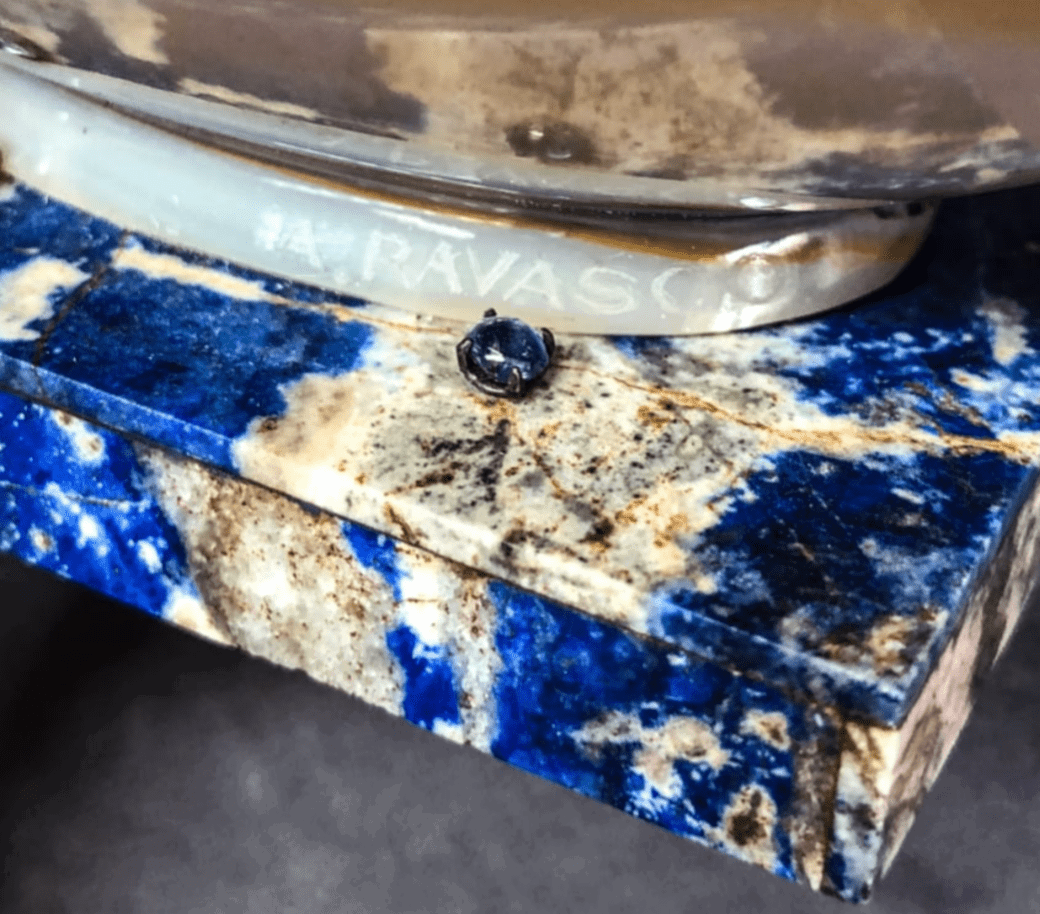The choice and combination of materials – translucent banded agate, lapis lazuli and sapphires in varying shades of blue – make this precious object typically characteristic of Ravasco’s designs. Whilst, at the same time, with its clean, streamlined shape, it is a perfect example of Art Deco.
An agate, lapis lazuli and sapphire tazza by Alfredo Ravasco, 1920s
This elegant bowl is emblematic of the work of the Italian goldsmith Alfredo Ravasco (1873-1958).


We particularly like the wave-like shape of the sapphire handles which echoes the undulating pattern of the banded agate and the muted but effective chromatic combination of blue, cream and beige.

Ravasco’s objects have been referred to as gioielli da salotto – jewels for the drawing room. This sophisticated and chic jewel, although originally created to stand on a side table in a salon decorated in Art Deco style, would perfectly blend into any graceful interior.

Similar bowls were exhibited by Ravasco at the 1933 Milano V Triennale and the 1936 Venezia XX Biennale Internazionale d’Arte.
written by


Further details:
An agate, lapis lazuli and sapphire tazza, 1920s
Designed as an oval-shaped banded agate bowl, embellished to two sides with clusters of circular-cut blue sapphires of graduated hues, upon a lapis lazuli base, 1920s, signed A Ravasco
Weight: 298 grams
Dimensions: 10cm x 14.4cm x 5.9cm
For further information on Ravasco’s precious object: info@understanding-jewellery.com
